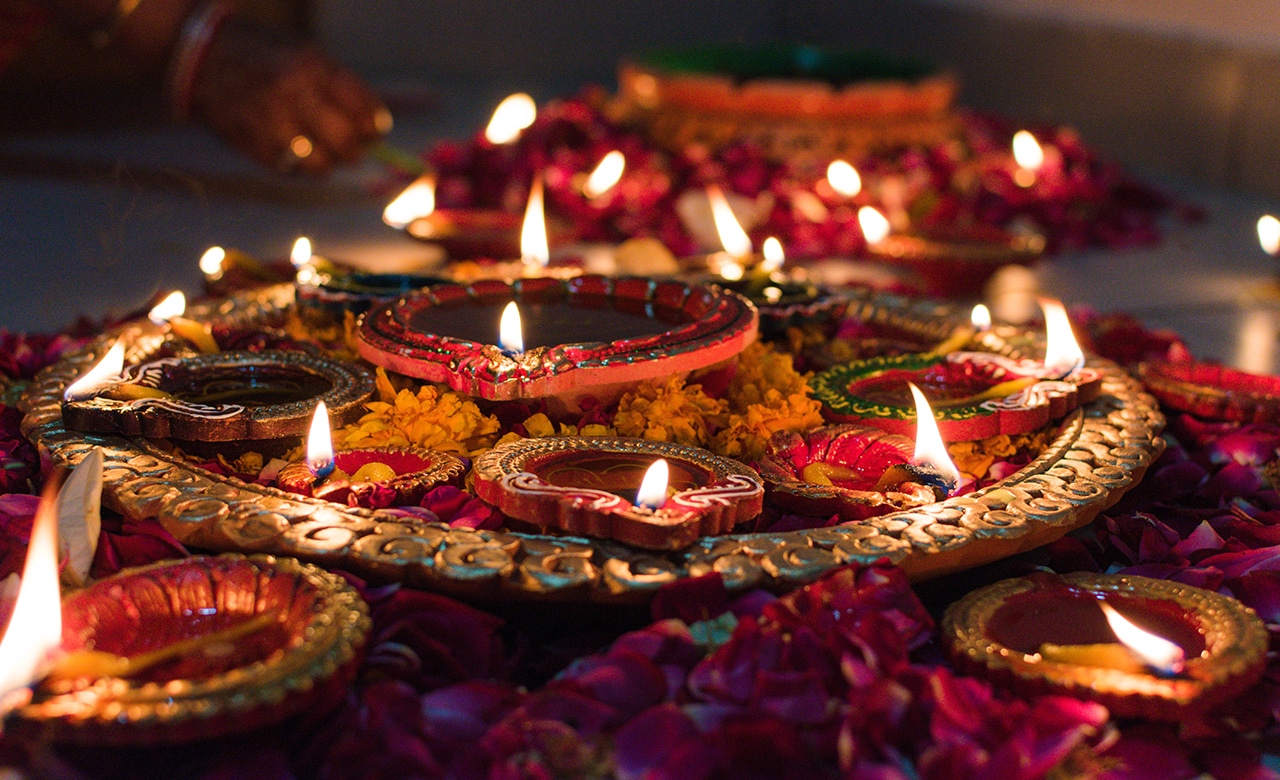
Informative
How to Perform Diwali Pooja
One of the most important rituals of Diwali is the Diwali Pooja performed on the third day of the five-day festival. In this blog, we understand how to perform the Pooja.
Let’s begin by understanding the best time to perform the Pooja this year –
Lakshmi Pooja Muhurat (Best time to perform the Pooja) –
24th October 2022 –
6:53 PM to 8:16 PM (India)
Lakshmi Pooja Muhurat –
24th October 2022 –
7:03 PM to 8:51 PM (New York)
You can choose the time according to the country you reside in.
Let’s now look at the step by step guide to perform the Pooja –
Cleanse the house – Make sure your house is entirely clean, and then sprinkle Gangajal (water from the holy Ganges) or water accumulated from a clean river around the house. This is to ensure there is a smooth flow of energy around the house.
Now we set up the platform for the Pooja. You need to spread a red cloth (can be cotton, silk or satin) on a raised platform which is preferably made of wood, and keep a handful of grains in the center of the platform. (As shown in image)
The next step is placing the water pot on the platform. Fill it with 70% of water and put one betel nut, one marigold flower, a coin and some rice grains inside the pot. Put five mango leaves in the water pot and arrange them in a circular design on the neck of the pot.
Now we place Maa Lakshmi’s idol. For this we need to make a small flat mountain of rice grains next to the water pot. Draw a lotus with haldi over it and place the idol or Goddess Lakshmi in the center. Place some coins in front of it.
Next comes Lord Ganesha’s idol. On the right side of the water pot, place the Ganesha idol. Apply a tilak of haldi and kumkum. Put some rice grains on the idol. Light a lamp to get the blessings of Lord Ganesha
Now place your study books, jewelry, business account books, and anything else related to your finances and material wealth besides the arrangement.
The next step is to light an oil lamp with five wicks and place it on a plate along with turmeric, Kumkum, rice grains, sandalwood paste, and gulal.
You are now ready to begin the Pooja. Begin by applying Kumkum to the water pot. Now offer flowers to it.
Take some rice and flowers. Join your hands together and close your eyes. Recite the Diwali Pooja mantra of Lord Ganesha or just chant his name and meditate for a few minutes to invoke her.
Offer flowers and rice to the Lord after the prayer.
Repeat the same sequence with Goddess Lakshmi.
Now pick up the idol of Lord Ganesha, and place it in a deep plate. Bathe it with water followed by Panchamrit (hyperlink to panchamrit video). Clean it with water again. Wipe the idol and place it back. Same procedure needs to be repeated with Maha Lakshmi’s idol.
Next, apply turmeric, Kumkum, sandalwood paste and gulal, along with rice to the idol. Place the garland cotton beads around the neck of the Lord. Place some marigold flowers and some Bel leaves. Burn few incense sticks. Again, same procedure with Maha Lakshmi’s idol.
Now offer coconut and place a betel nut on a betel leaf. Now put some turmeric, Kumkum and rice over it. Pour some puffed rice, coriander seeds and cumin seeds over the idol. Place some sweets, fruits and money or gold ornaments in front of it.
Lastly, we perform the Aarti, first of Lord Ganesha and then of Maa Lakshmi.
Disclaimer – Kindly note that these are just suggested guidelines to perform the Pooja. If you can’t adhere to them and still perform the Pooja with pure intention and emotion, you will still get the desired result. If you can follow the guidelines it’s great but even if you can’t please don’t get disheartened and still perform the Pooja as per your convenience. Your emotions, love, and devotion matter the most in the Pooja and not the technicalities.
We hope this blog helped you understand how to perform the Pooja in detail. If you’d like to get the Diwali Pooja performed at your place by one of our Vedic Scholars, please write to us at info@chamundaswamiji.com
Post a Comment
-
Subscribe to Our Blog
-
Categories
-
Popular Articles
- Dead moth in the house. What universe is trying to tell you?
- Spiritual Meaning of Moth
- Vivah Bandhan Curse – What Is It and How to Spiritually Heal It.
- The Dasa Mahavidyas
- What are Beej Mantras?
- Tripura Sundari | The Dasa Mahavidya
- Maa Bhuvaneshwari | The Dasa Mahavidyas
- The Five Shades of Tantra
- Ramakrishna Paramhansa – The Man who almost became a Woman
- Maa Chinnamasta | The Dasa Mahavidyas



